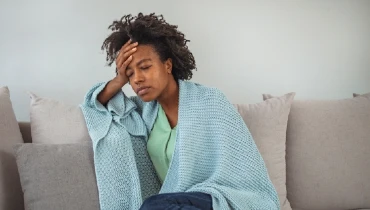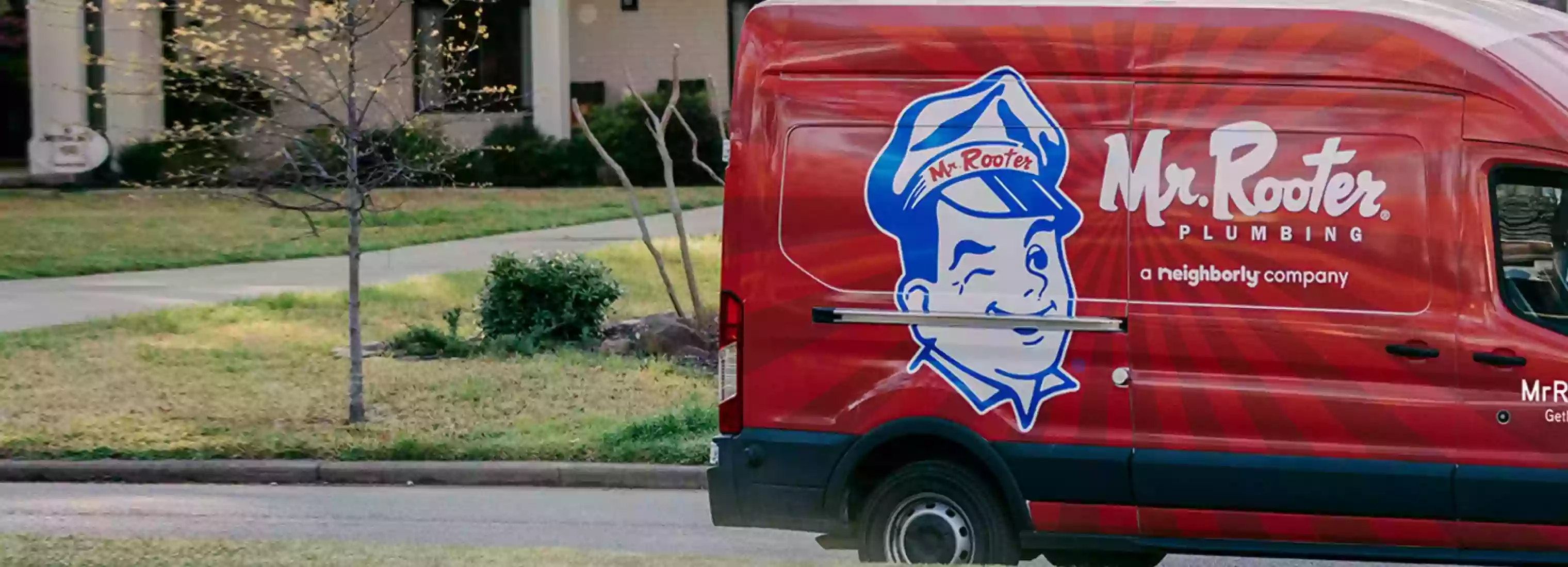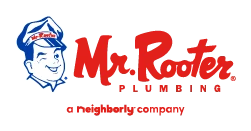7 Ways Your Home or Office is Making You Sick

Most individuals spend their time in two primary areas — work and home. With many convinced that one in four Americans will be working remotely in 2021, individuals are spending even more time at home. You can become ill from the different buildings you occupy. It is called sick building syndrome. A few common examples of sick building syndrome symptoms include:
- Nausea;
- Light-headed/dizziness;
- Throat, eyes, and nose irritation;
- Chest tightness;
- Headaches;
- Body aches;
- Rashes;
- Incessant sneezing;
- Forgetfulness/difficulty focusing;
- Constant fatigue.
Any building can make you sick. Even though you can generally alleviate symptoms by reducing exposure, the area that is making you sick could be a place that you need to occupy — like your home or place of work. It is important to identify and take care of the culprit appropriately. This article will cover different common causes of building-related illnesses and what you can do about them.
1. Heating and Cooling Systems
Heating, ventilation, and air conditioning (HVAC) systems are notorious contributors to building-related illness. The problem with this is that HVAC systems generally go throughout an entire infrastructure, so once there is a contaminant, it has likely been spread throughout the home.
When your HVAC system is cooling your home, it can leave stagnant water behind in the HVAC ducts that can lead to a build-up of bacteria and mold. If your HVAC system and ducts do not get regular maintenance or cleaning, this could also contribute to poor air quality. This microbial growth and exposure to poor air quality can cause issues such as:
- Difficulty breathing — especially those with asthma;
- Headaches;
- Skin irritation or rashes;
- Eye irritation or pain;
- Runny nose or incessant sneezing;
- Throat irritation.
HVAC systems create an efficient method for heating and cooling your home — below are a few things you can do to ensure your HVAC systems aren’t getting you sick:
- Change air filters as recommended by the HVAC company or by the filter company — generally every 60 days for lower-level filters and longer for better quality filters;
- Upgrade air filters to one that is better equipped for your home. If you have pets and a large home, a simple one-inch filter may not be enough;
- Schedule recurring HVAC system maintenance and cleaning — examples include leak checks, corrosion checks, air duct cleaning.
2. Plumbing Leaks
Aside from the obvious leak issue at hand, home and commercial plumbing leaks can cause significant health issues. In some cases, the leaky pipe contaminants may even end up in your drinking water — leading to additional issues.
When plumbing pipes leak or break in or below your home, it could lead to mold and other microbial growth. This can cause a variety of different respiratory issues and symptoms from irritation to difficulty breathing. All homes have plumbing, and leaks are inevitable, so it is important to know what you can do and the options you have to ensure you aren’t getting sick from plumbing leaks.
- Regularly check for leaks all over your home. Some leaks are below the surface and require special tools and expertise, but other simpler leaks — like toilet leaks — should be something you can locate yourself;
- If you find a leak, turn off your water to reduce the amount of potential damage. Additionally, dry and clean the area where the water leaked;
- If you notice your water bill is going up, but you can’t find a leak or you have found a leak, but you can’t fix it, you may need to take advantage of residential or commercial plumbing services. Plumbing professionals can help with things like:
- Leak detection;
- Water damage restoration;
- Waterline repair;
- Sewer line repair.
- Some of the best ways to avoid plumbing leaks are preventative plumbing system maintenance or replacing the plumbing system entirely to give your whole building a fresh, safe start with reliable plumbing.
3. Furniture and Textiles
Your furniture, flooring, and other textile materials (e.g. bed sheets, carpets/rugs) are treated with harsh chemicals during production and they offer a great place for microscopic bugs like dust mites. According to the American Lung Association, dust mites are a common, natural-occurring pest that creates several health symptoms — including:
- Runny nose;
- Sneezing;
- Coughing;
- Congestion;
- Headaches;
- Eye irritation;
- Skin irritation;
- Sinus pressure;
- Asthma attacks.
Furniture, flooring, and other textiles offer character to your home or office, but they can contribute to your sickness, so it is important to know what action to take to prevent this:
- Dust your furniture and surfaces regularly;
- Vacuum your flooring and your furniture regularly;
- Take advantage of professional deep cleaning services that can wash and steam your flooring, furniture, and other textiles;
- Microscopic bugs love humid areas, so use a dehumidifier to reduce the amount of water in the air;
- As time goes on, it doesn’t matter how often you clean, it may be time to replace furniture, flooring, and other textiles.
4. Appliances and Household Items
Common household appliances and items can end up making you feel sick — especially appliances that use water. Some appliances and household items that can make you sick include:
- Dishwashers, washing machines, sinks, and all water features (faucets, fountains, showerheads) all can contribute to getting sick. All three appliances utilize water and all three can be a great place for bacteria or mold to thrive — especially if there is a leak;
- Drying racks used for clothing and dishes are the perfect breeding grounds for microbial. So are dish rags and sponges used for cleaning dishes;
- Shower mats that are used for when you get out of a shower or bath are another perfect area for bacteria. Damp towels are also another contributor;
- Refrigerators create dust and mold hazards.
Household items and appliances help make things convenient and there are specific things you can do to ensure they aren’t contributing to sickness:
- Deep-clean your household items and appliances. If you can throw it in the washer, make sure to that (shower mats, towels), and if you need to scrub with hot water and chemicals, do that too;
- Check your appliances to make sure they are working properly. Look for any leaks and be observant of any peculiar smells coming from things like dishwashers, washing machines. If you find leaks, contact the company you got the appliance from, a repairman, or possibly a plumber;
- Clean out your fridge, scrub shelves, and avoid leaving old food in your fridge for too long;
- If you have a water filtration system in your sink, your fridge, or an individual pitcher, be sure to periodically change the filter.
5. Cleaning Products
Cleaning is one of the best ways to reduce building-related sickness, but several cleaning products can cause sickness themselves. They can cause eye/nose/ear/throat/skin irritation, headaches, nausea, dizziness, and they can even lead to cancer. Some common hazardous chemicals to avoid in cleaning products are:
- Perchloroethylene;
- Formaldehyde;
- 2-Butoxyethanol;
- Ammonia;
- Sodium hydroxide;
- Chlorine.
Vacuums are cleaning products that can also contribute to sickness and in some cases, they can do more harm than good. If your vacuum isn’t equipped with a good, high-efficiency filter, it could just send dust and other particles back up into the air. The same is true if your vacuum bag or collector is full.
As mentioned above, cleaning is one of the best ways to eliminate sick hazards in your home or office, so it is important to consider the following:
- Check ingredients of cleaning products — even those labeled as “green” or “natural”;
- Consider creating your own DIY cleaning products;
- Change out dust or cleaning rags after every use;
- Take advantage of professional cleaning or maid services;
- Empty your vacuum and change your filter;
- Upgrade your vacuum to one with a HEPA filter.
6. Building Materials
Numerous building materials can contribute to sickness. Some are still used today, others are not but are still located in older homes. They contain harmful materials and chemicals and when disturbed, those materials can be circulated throughout the air. Below are some potential chemicals found in building materials:
- Asbestos: Asbestos was used in the past as heat insulation for flooring/ceiling tiles, plasters, adhesives, wallboards, roofing, cement, and fireproofing. Asbestos is a cancer-causing carcinogen;
- Chromated copper arsenic (CCA): CCAs were used to prevent wood rot, so they can be found in some areas/items that utilize wood. CCAs are a cancer-causing carcinogen;
- Formaldehyde: Formaldehyde is formed through natural processes and it is added as a preservative as well. Formaldehyde is a carcinogen and it can cause ear/nose/throat/eye irritation, difficulty breathing, and nausea;
- Perfluorinated compounds (PFCs): PFCs are used to make stains and a variety of consumer products (e.g. personal hygiene products). There are several types of PFCs, but several are carcinogens;
- Phthalates: Phthalates are chemicals used to make plastics stronger and flexible. They can be found in a lot of products like PVC, toys, flooring, hair products, and furniture upholstery. They can negatively affect the human hormone and reproductive systems.
- Lead: Lead can be found in old pipes, soil, pottery, and it used to be used in house paint. Exposure is extremely dangerous and it can deter brain development, cause seizures, damage kidneys, damage nervous systems, and even lead to death.
Listed below are several solutions to harmful building materials:
- If you are building or renovating, carefully choose your products and make sure to avoid products with the following chemicals above;
- If you have asbestos in your home, take advantage of asbestos abatement professionals. They will remove, treat, and dispose of asbestos properly;
- Open your windows regularly, purchase activated carbon filters, and use an air purifier to circulate bad air out, and bring fresh air in;
- You can remove lead paint by yourself, but you want to be sure to turn off your HVAC system, seal off your home, have warm water to place removed lead, soak the lead paint on the walls, remove household items if the lead paint is inside to avoid the spread of lead. It can be a good idea to hire a professional;
- Replace or properly maintain wood or other materials with hazardous chemical treatments.
7. Pollution and Inadequate Ventilation
Air quality is important and pollution and inadequate ventilation are a troublesome pair that deter from that. They can cause allergic reactions, difficulty breathing, irritation throughout the body, headaches, body aches, and watery eyes. The air in your home can become polluted by a variety of indoor and outdoor sources:
- Water pollution;
- Smoke pollution;
- Chemical pollution;
- Radon pollution.
There are several ways to mitigate this — consider the following:
- Vacuum your house to pick up the allergens and chemicals that gather in household dust;
- Don’t smoke or allow smoking in your house, or outside near open windows or doors;
- Place doormats on the inside and outside of doors for occupants to wipe their feet on when entering. You should also clean these regularly;
- Keep your humidity at a healthy level with a humidifier/dehumidifier;
- Perform tests for radon or other gases or chemicals you may be worried about;
- Let in fresh air from time to time so that your HVAC systems are recycling the same air;
- Regularly change your air filters and get your ducts cleaned periodically.
When you consider how much time we spend indoors it is important to know that the air we breathe and the material that surrounds us is not making us sick. The information above should give you a better understanding of some of the potential indoor hazards that exist and ways to address them. When it comes to the quality of your plumbing, the pros at Mr. Rooter Plumbing are ready to help. We can perform a complete inspection to ensure your plumbing system is safe and operating efficiently. To learn more give us a call or request an appointment online today.
 Click to call
Click to call


